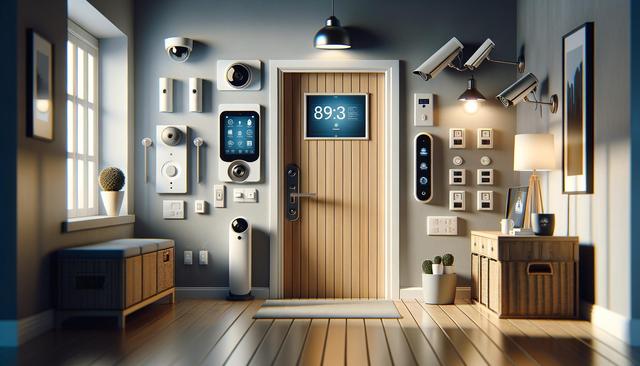
Understanding Home Security Systems: A Practical Guide for Homeowners
What Is a Home Security System?
A home security system is a network of devices and components that work together to protect a residence from intrusions, emergencies, and environmental hazards. These systems typically include a control panel, sensors for doors and windows, motion detectors, security cameras, alarms, and often, a monitoring service. Some systems are designed for self-monitoring via smartphone apps, while others connect to professional monitoring centers that respond to alerts. The primary goal of a home security system is to detect and deter unauthorized access and notify homeowners or authorities when issues arise.
Security systems can range from basic kits to more complex setups with integrated smart home features. Many modern systems also offer compatibility with other smart devices like lights, thermostats, and door locks. This integration not only enhances security but also improves the overall convenience and automation of home management.
Key Components and Their Functions
Understanding the components of a home security system can help you make informed decisions about what your home needs. Here are some of the most common elements:
- Control Panel: The central hub that communicates with all connected devices and manages system settings.
- Door and Window Sensors: Detect when a door or window is opened unexpectedly.
- Motion Detectors: Identify movement within specific areas inside the home.
- Security Cameras: Monitor indoor and outdoor spaces and often provide live video feeds and recordings.
- Alarm Sirens: Emit loud sounds to alert occupants and deter intruders.
- Environmental Sensors: Detect smoke, carbon monoxide, flooding, and temperature changes.
Each component plays a role in enhancing the overall effectiveness of your security setup. The combination of these elements creates layers of protection that work together to secure your home.
Professional Monitoring vs. Self-Monitoring
When choosing a home security system, one important decision is whether to opt for professional monitoring or self-monitoring. With professional monitoring, a dedicated team monitors your system 24/7 and can notify emergency services if an alarm is triggered. This option adds a layer of responsiveness and is especially valuable when you’re away from home or unable to respond to alerts.
Self-monitoring, on the other hand, gives homeowners direct control through mobile apps. You receive notifications and decide how to respond. This option can be more affordable and offers real-time information, but it places the responsibility entirely on the homeowner. The choice between the two depends on your lifestyle, budget, and personal preferences.
Some systems offer hybrid models, allowing you to switch between monitoring types or combine features for added flexibility. It’s worth considering the pros and cons of each approach to find a solution that aligns with your needs.
Smart Features and Integration
Modern home security systems often come equipped with smart technology that enhances both usability and protection. Integration with smart home devices allows for greater automation and control. For example, you can:
- Arm and disarm your system remotely via smartphone.
- Receive instant alerts when sensors are triggered.
- View live video feeds from security cameras.
- Automate lighting schedules to simulate occupancy.
- Control locks and thermostats remotely.
These features not only improve security but also contribute to energy efficiency and convenience. Voice control through virtual assistants is another popular feature, allowing users to manage systems hands-free. As technology evolves, the line between home automation and security continues to blur, offering homeowners greater control and peace of mind.
Choosing the Right System for Your Needs
Selecting the most suitable home security system requires assessing your specific needs and preferences. Start by evaluating the size of your home, the number of entry points, and areas that require surveillance. Determine whether you prefer a DIY installation or professional setup, and consider the level of monitoring that fits your lifestyle.
Other factors to take into account include:
- Budget: Compare upfront equipment costs and ongoing monitoring fees.
- Scalability: Choose a system that can grow with your needs.
- Ease of use: Look for intuitive interfaces and reliable mobile apps.
- Customer support: Access to timely assistance can be crucial during setup or emergencies.
Reading user reviews and seeking recommendations can also provide insights into product reliability and performance. Ultimately, the ideal system is one that balances security, convenience, and affordability while meeting your household’s unique requirements.
Conclusion: Prioritizing Peace of Mind
Investing in a home security system is a proactive step toward protecting your property, loved ones, and personal belongings. With a wide range of options available, homeowners can find systems that align with their needs, whether they’re looking for a basic setup or a fully integrated smart solution. By understanding the components, choosing the right monitoring method, and taking advantage of smart features, you can significantly enhance the safety and comfort of your living space. Prioritize your peace of mind by making an informed decision that supports both your lifestyle and long-term security goals.


